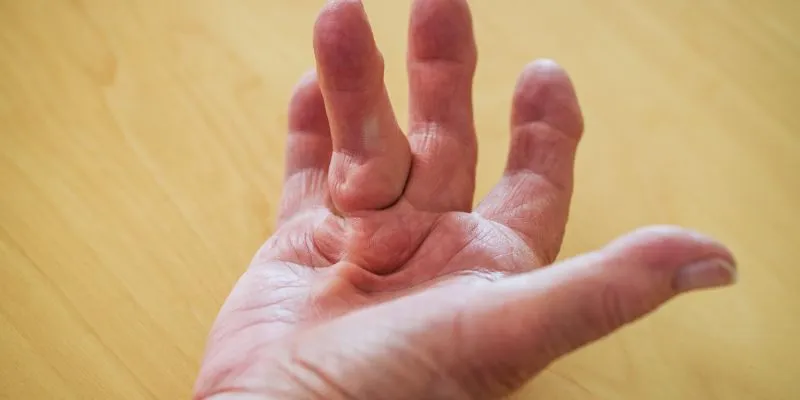What to Know About Erythema Migrans
The characteristic skin rash known as erythema migrans is frequently one of the initial symptoms of Lyme disease, a condition spread by ticks and brought on by the bacteria Borrelia burgdorferi. Understanding this medical condition is essential for early diagnosis and treatment. This article covers the symptoms, causes, diagnosis, available treatments, and preventative measures for erythema migrans. Seek medical help immediately if you or someone you know shows symptoms.
Erythema Migrans: What is it?
Erythema migrans (EM) is most commonly identified by a red, expanding rash with a “bull’s-eye” pattern. Although usually painless, this rash typically appears where a tick bite occurred. While not an acute condition on its own, it is often the first sign of Lyme disease, which can lead to severe health issues if left untreated.
Symptoms of Erythema Migrans:
Early diagnosis and treatment of erythema migrans depend on recognizing its signs. Key symptoms include:
- Typical Rash: A red, round rash that expands over time, often with a bull’s-eye-like clearing in the center. The rash’s diameter can range from a few inches to over a foot.
- It commonly appears on body parts such as the arms, legs, trunk, and neck.
Additional Symptoms:
- Chills and fever
- Tiredness
- Joint and muscle discomfort
- Enlarged lymph nodes
- Headache
- The rash usually appears three to thirty days after a tick bite.

Causes of Erythema Migrans:
Erythema migrans is primarily caused by an infected black-legged tick bite (also known as a deer tick). Understanding the causes can help in implementing preventive measures:
- Infection: The bacterium Borrelia burgdorferi is transmitted through the saliva of an infected tick.
- Tick Habitat: Ticks are typically found in grassy or forested areas, with populations peaking in late spring and summer.
- Risk Factors: Living in areas with high tick populations, engaging in outdoor activities like gardening, hiking, or camping, and having pets that carry ticks.
Other Causes:
- Other Tick Species: Different species, such as the western black-legged tick (Ixodes pacificus), can also spread Borrelia.
- Human Behavior: Activities like hunting and fishing increase exposure to tick habitats.
- Climate Change: Changes in climate may affect tick populations and distribution, increasing risk in previously unaffected areas.
Diagnosis of Erythema Migrans:
Diagnosis involves a combination of physical exams and patient history. Key diagnostic techniques include:
- Physical Assessment: Evaluation of the rash’s characteristics, such as its location and appearance.
- Medical History Review: Discuss the onset of symptoms, any tick exposure, and recent outdoor activities.
- Laboratory Testing: Blood tests may confirm the presence of Borrelia burgdorferi. Typical tests include ELISA (enzyme-linked immunosorbent assay) and the Western blot test.
Treatment for Erythema Migrans:
Prompt treatment is crucial to prevent Lyme disease from worsening. Treatment options typically include:
- Antibiotic Treatment: Oral antibiotics, usually administered for 10 to 21 days, effectively treat most erythema migrans cases. Common antibiotics include:
- Doxycycline: Preferred for most adults and children over eight, as it also treats co-infections.
- Amoxicillin: Often used for young children.
- Cefuroxime axetil: An alternative for those who cannot take amoxicillin or doxycycline.
- Prolonged Antibiotic Use: In certain cases, especially if neurological issues or arthritis develop, a longer course of antibiotics, sometimes given intravenously, may be necessary.
- Symptom Management: Over-the-counter medications like acetaminophen or ibuprofen can help relieve discomfort and reduce fever. Corticosteroid creams may reduce localized irritation.

Complications of Erythema Migrans:
Some individuals experiment with homeopathic treatments or herbal supplements; however, these should be evaluated by a healthcare professional for safety and efficacy.
- Aftercare: Routine follow-up visits with a healthcare provider are crucial to monitor symptoms and ensure the infection is adequately treated.
- Issues Without Treatment: Untreated erythema migrans can lead to more severe Lyme disease complications, such as:
- Heart Problems: Lyme carditis can cause irregular heartbeat patterns.
- Joint Pain: Lyme arthritis manifests as severe joint pain and swelling, particularly in the knees.
Prevention of Erythema Migrans:
Reducing the risk of tick bites is key to preventing erythema migrans. Consider the following precautions:
- Outdoor Safety Measures: Wear light-colored clothing, long sleeves, and pants to easily spot ticks. Apply insect repellents containing permethrin or DEET to exposed skin and clothing.
- Tick Checks: Thoroughly inspect yourself, children, and pets for ticks after outdoor activities. Use fine-tipped tweezers to carefully and promptly remove any attached ticks.
- Yard Maintenance: Keep grass short, remove leaf litter, and use wood chips or gravel to create a tick-safe zone around your yard to reduce contact with tick-infested areas.
When to Seek Medical Help:
If you suspect Lyme disease or erythema migrans, seek medical attention. Consider the following scenarios:
- Rash Development: Consult a doctor if you develop a rash after outdoor exposure or a tick bite.
- Symptom Onset: Seek medical advice if you experience neurological issues, joint pain, or flu-like symptoms.
- Persistent Symptoms: If symptoms worsen or persist after treatment, contact a healthcare provider.
Conclusion
Erythema migrans is a crucial early indicator of Lyme disease, highlighting the importance of awareness and prompt treatment. By understanding its symptoms, causes, and treatment options, you can take preventive measures to protect your health and well-being. Remember, prompt action can prevent the progression of the disease and potential complications.
Do not hesitate to seek medical attention if you suspect you might have erythema migrans or have been exposed to ticks. Your health is invaluable, and taking action today can safeguard your future.










